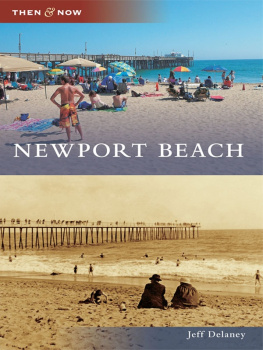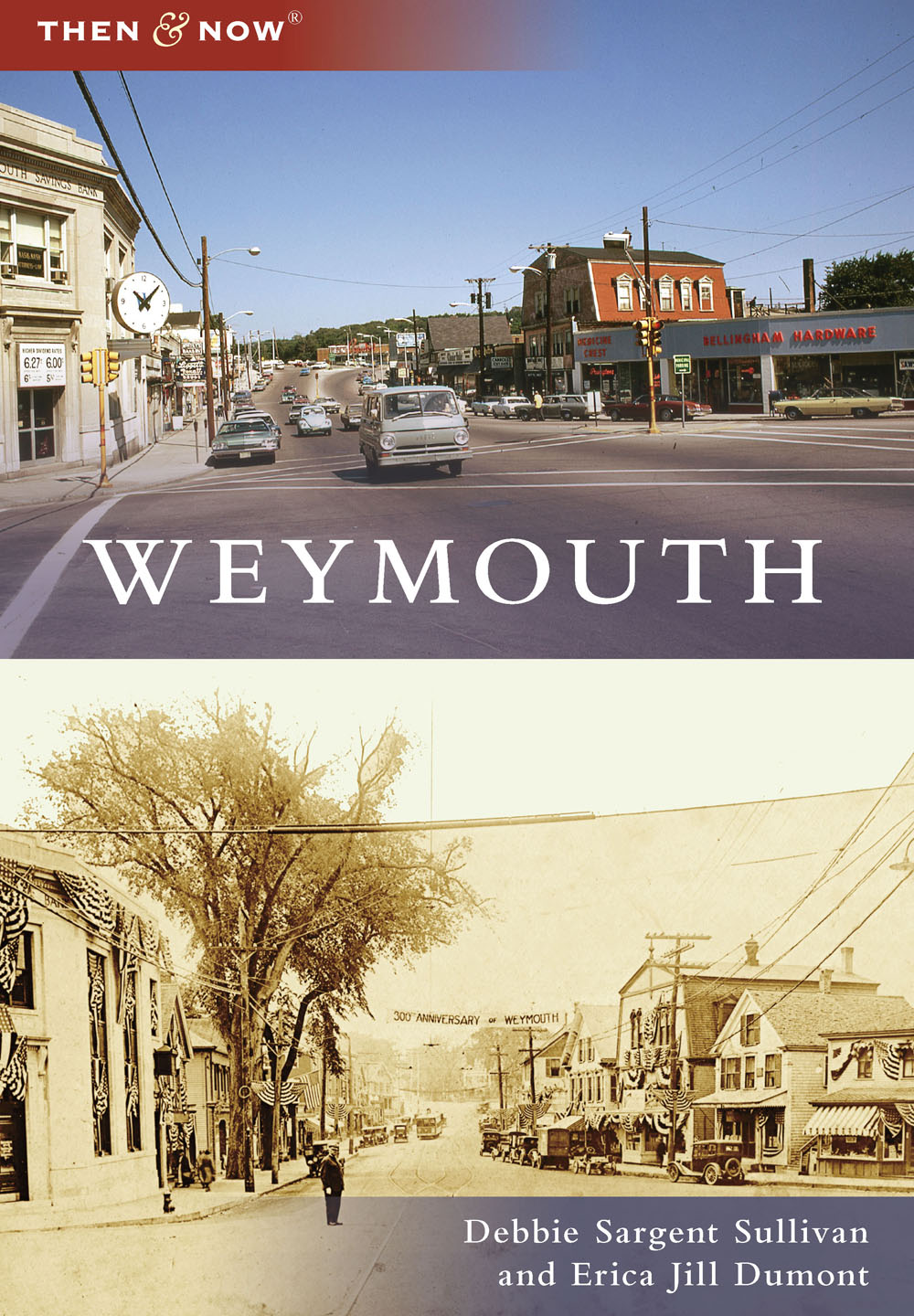
THEN & NOW
WEYMOUTH
OPPOSITE: This image features Jackson Square in 1910 during Old Home Week. The building in the center is where the post office stands today. (Courtesy of Debbie Sargent Sullivan.)
THEN & NOW
WEYMOUTH
Debbie Sargent Sullivan
and Erica Jill Dumont

This book is dedicated to James Palmieri, curator of the Weymouth Historical Society, for over 50 years of preserving Weymouths history.
Copyright 2016 by Debbie Sargent Sullivan and Erica Jill Dumont
ISBN 978-1-4671-2420-1
Ebook ISBN 9781439658697
Library of Congress Control Number: 2016938751
Published by Arcadia Publishing
Charleston, South Carolina
Then and Now is a registered trademark and is used under license from Salamander Books Limited
For all general information, please contact Arcadia Publishing:
Telephone 843-853-2070
Fax 843-853-0044
E-mail
For customer service and orders:
Toll-Free 1-888-313-2665
Visit us on the Internet at www.arcadiapublishing.com
ON THE FRONT COVER: Seen here is Weymouth Landing. The then image was taken on June 23, 1923, and shows the landing decorated for the towns tercentenary celebration. The bank was a new building at that point and had replaced a drugstore. The now image was taken in the 1970s and shows Liggetts Drugstore, Whiteys Bakery, Capital Market (in the back), and Bellingham Hardware (on the right). The landing allowed people of Weymouth and Braintree to get all of their shopping done in one place. (Both, courtesy of the authors collection.)
ON THE BACK COVER: Nestled along Green Street in North Weymouth was a once-bustling general store called Green Street Store. The building, erected in 1940, still stands but has been vacant for years. This image features the store in its early, vibrant years. (Then image courtesy of Weymouth Department of Public Works.)
CONTENTS
ACKNOWLEDGMENTS
Special thanks go to three people who have made major contributions to the preservation of Weymouth history: John R. Coffey Jr., for scanning thousands of images of Weymouth; Capt. Michael Crowley of the Weymouth Fire Department, for researching and writing Weymouths fire history; and William F. Sargent, commander of the ANA Patriot Squadron, for preserving the history of the South Weymouth Naval Air Base.
The history of Weymouth has been preserved and protected by many other caretakers over the decades. Without the efforts of these caretakers, Then & Now: Weymouth would simply not have been possible. We would like to thank the men and women of the Weymouth Historical Society, as well as the private citizens who shared their photographs and stories with us. In particular, we would like to thank the following individuals: Rob and Tami DelGallo, Paula Plett DiMattio, Brian Dumont, Kevin Dwyer, Toni Tocchio Fisher, Ken Gerrish, Theodore Hawkes Jr., Claire Howsberger, Tom and Beth Jacobs, Brian Kelley, Dan Kelleher, Greg LaRocco, Marilyn Lima, Sabrina Manzelli, Steve McAvoy, Lola Humphries Miller, Paula Mine, Dr. Michael Murphy, Louise Jones Oteri, Laurie Porter, Lynn Porter, Harold Porter, Jim Richmond, Clement Robson, Kyle Sargent, Derek Sargent, Steve Schneider, and Megan Sullivan.
Unless otherwise noted, images appear courtesy of the authors.
INTRODUCTION
Weymouth, Massachusetts, is a town similar to many other coastal towns, yet it has an undeniably unique character. From the beginning, Weymouth was a town of ambitious go-getters. In 1622, Weymouth, then called Wessagusset, was settled by a small group of Englishmen searching for economic opportunity. As time moved on, Weymouth became a quintessential New England agrarian community with farms, several villages, and two meetinghouses.
In the 19th century, Weymouth grew to become one of New Englands preeminent shoe manufacturing centers. Companies both large and small sprung up all over town, employing thousands of people and selling shoes all over the country. Some of these companies operated well into the 20th century. Other businesses flourished too; listings for variety stores, lumber dealers, carriage makers, and grocers can be found in the towns annual directories.
Despite the economic vitality of the town, Weymouths people did not live by the motto of all work and no play. The town had its fair share of vacation spots. Whether it was on the sands in North Weymouth or in the shades of The Birches, Weymouths people found time and resources for recreational pursuits.
In the 20th century, Weymouth grew in numbers, and homes began to spring up all over the place. Neighborhoods were developed, schools were built, and businesses continued to flourish. Today, Weymouth is home to over 50,000 people and is more vivacious than ever before.
Weymouths unique character is found both in the present and the past. Although its old homes and quaint storefronts are seamlessly mixed with trappings of modern life, they tell the story of Weymouth in years gone by. The following pages will highlight just a few examples of how Weymouth has changed and how it has stayed the same over the course of time.
CHAPTER 1
NORTH WEYMOUTH

Bradley Fertilizer Company, the largest fertilizer works in the country, stood where the WeymouthPort Condominiums now stand. It was established in the 1870s by Peter B. Bradley, who owned hundreds of acres of land in Hingham. The companys campus eventually became self-reliant, with its workers living on-site, and stores, blacksmiths, and other businesses serving the inhabitants. It employed between 1,200 and 1,400 people. (Courtesy of Don Cormack.)
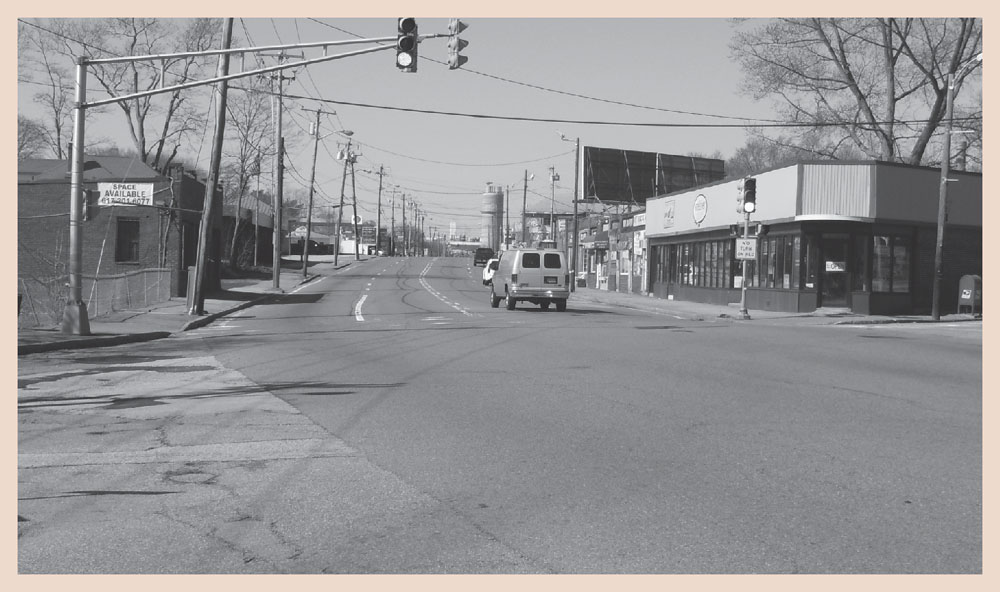
This view of Bicknell Square, located at the intersection of Bridge and Sea Streets, looks north on Bridge Street. The building to the right remains largely the same, though the businesses that inhabit it have changed. At the end of the 19th century, trolley tracks were laid on Bridge and Sea Streets to transport passengers between Jackson Square in East Weymouth and Quincy. (Then image courtesy of Don Cormack.)
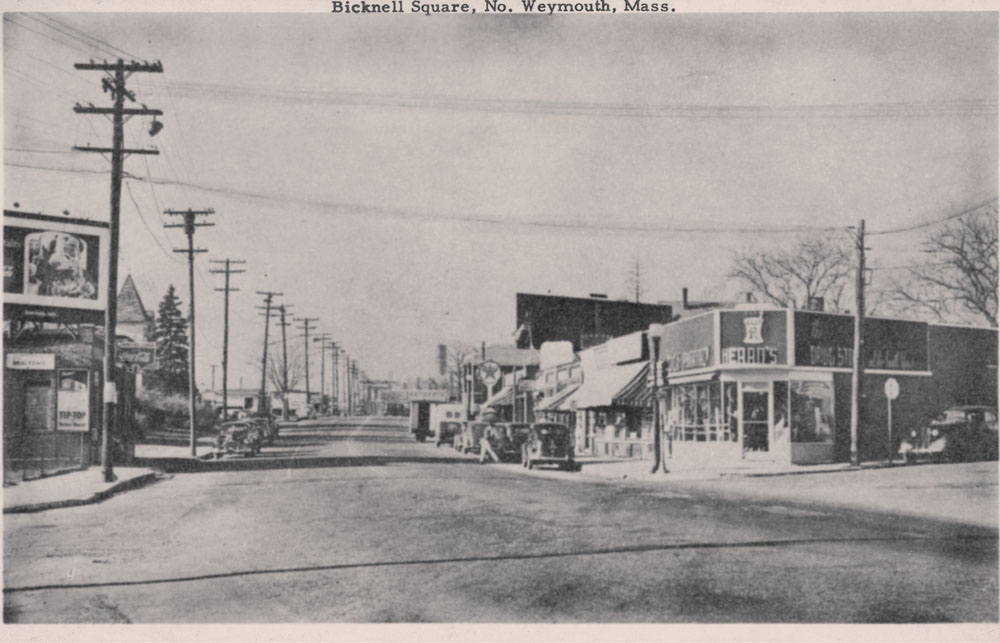

This view shows Wessagusset Beach and Fort Point, a popular tourist spot in the early 1900s. The building on the right was Bower Hotel. Each day during the summer, a steamboat named Stamford brought beach-goers from Boston to Weymouth. The cost was 15 for a one-way ticket, or 25 for a round-trip. The steamboat stopped running when tourists began to prefer Nantasket Beach over North Weymouth. The Bower Hotel has since been demolished.
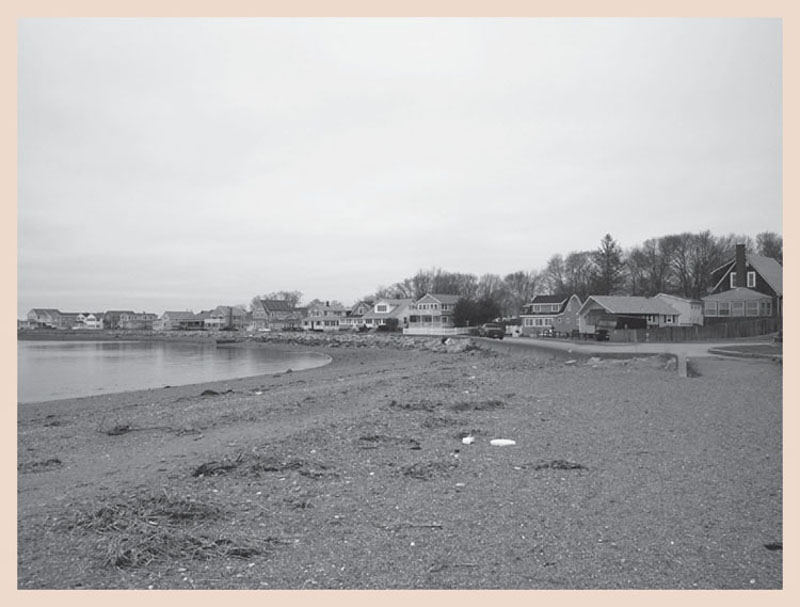
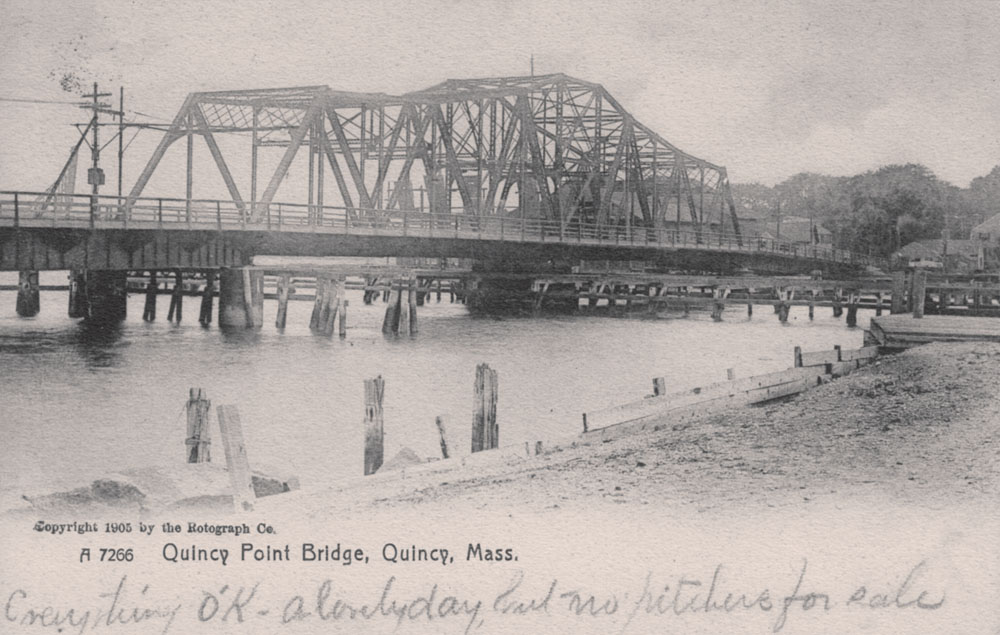
Next page









